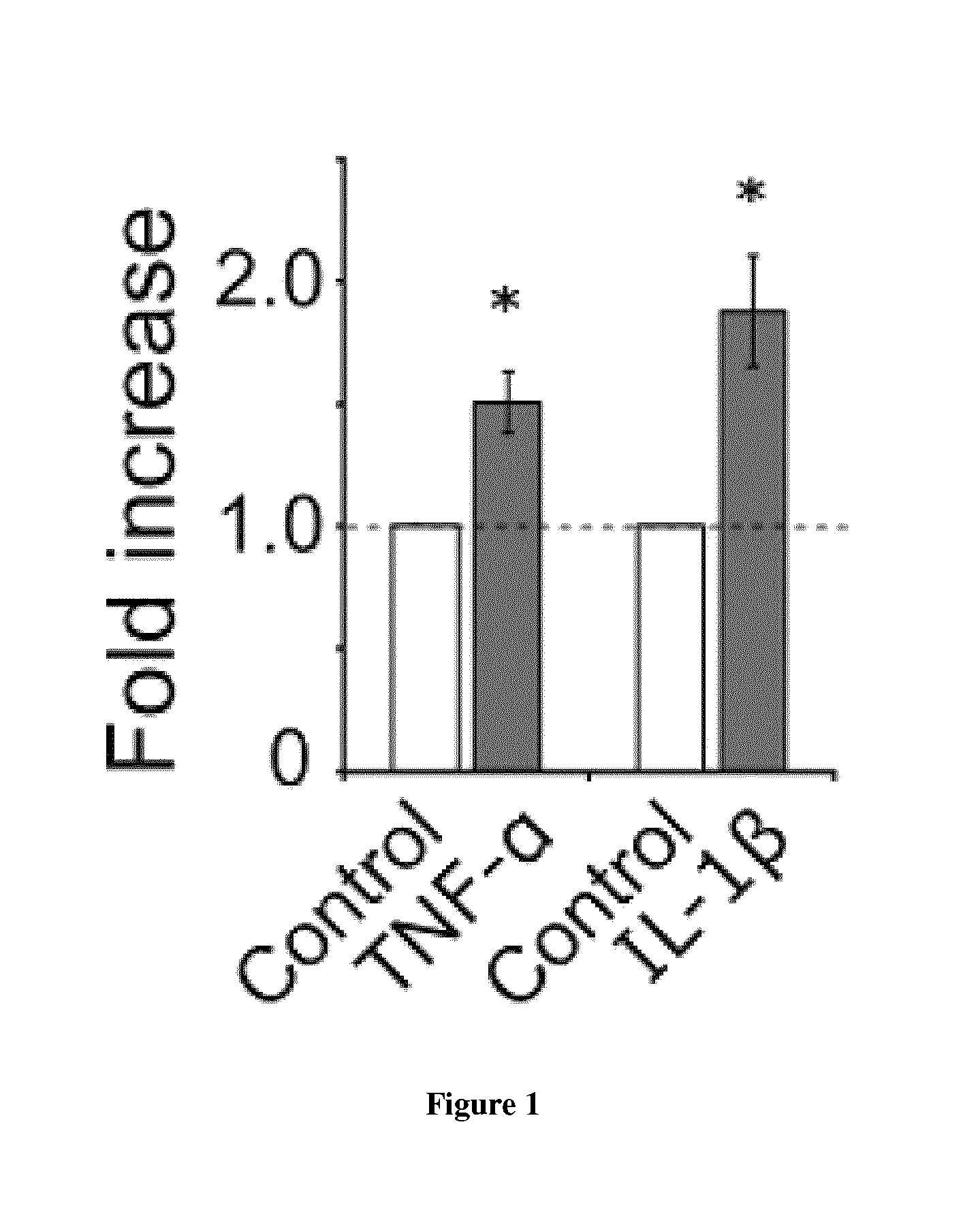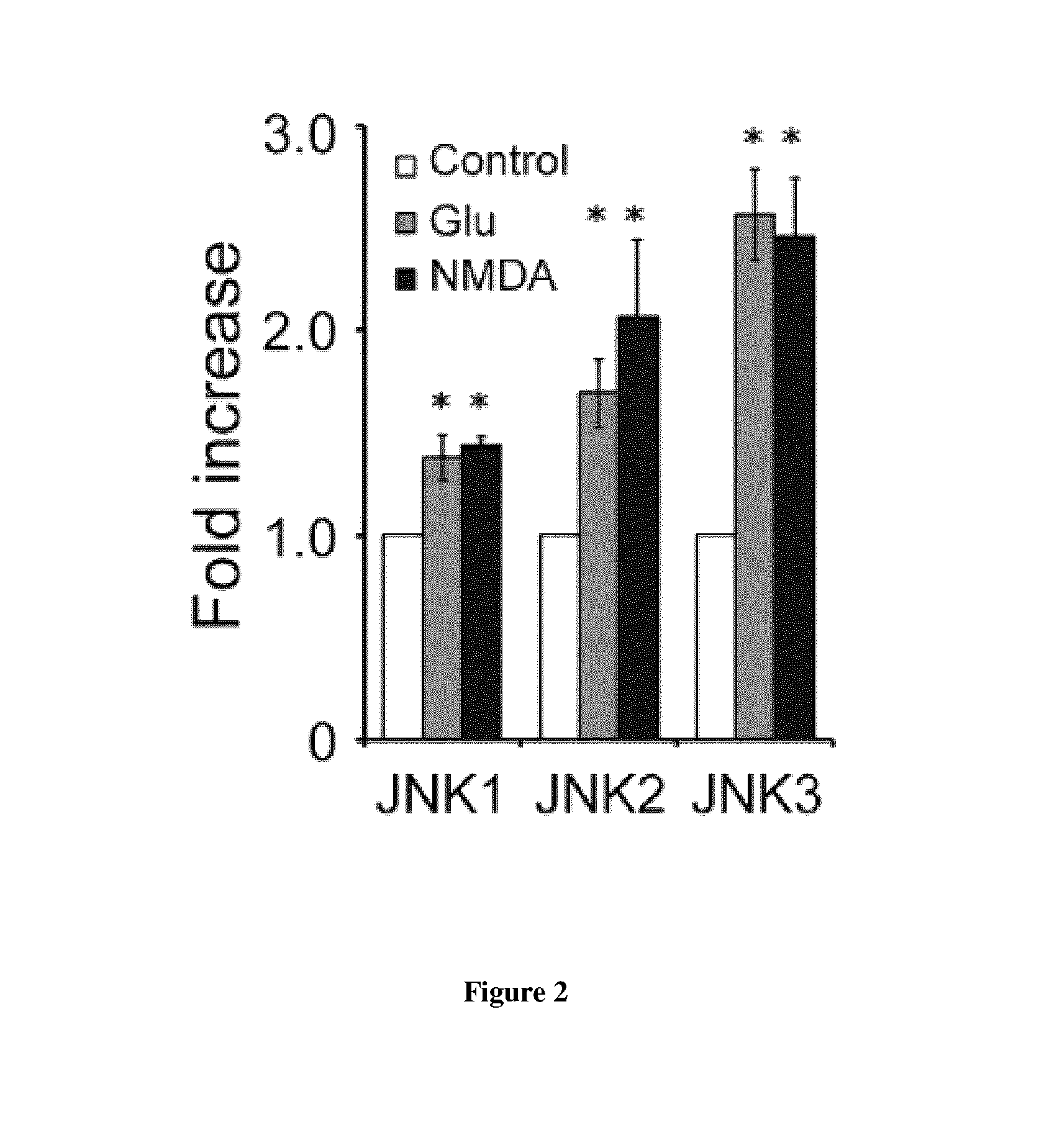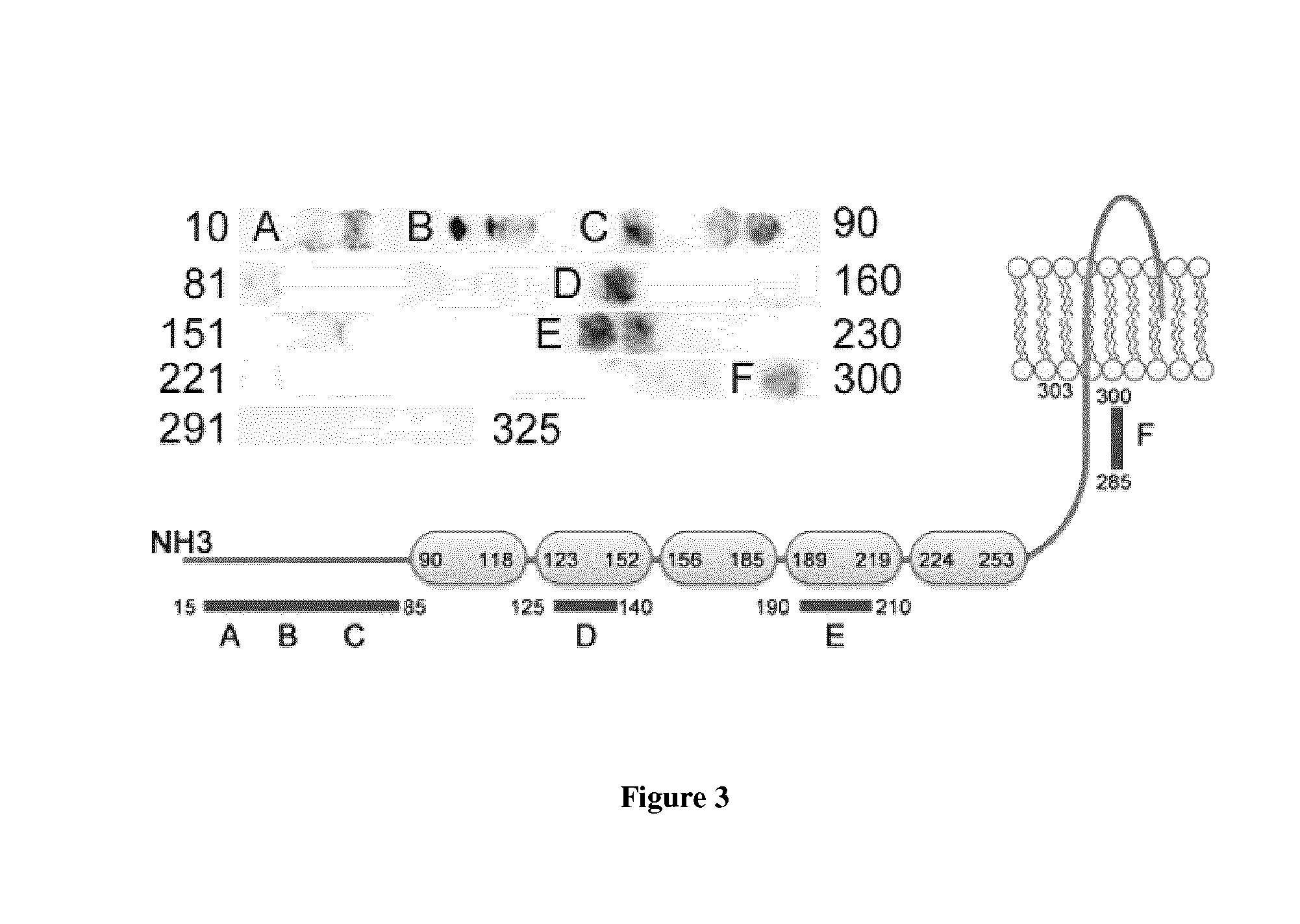Neuroprotective peptides that inhibit interaction of palmitoyl acyl transferase zinc-finger dhhc type containing 17 (ZD17) and c-jun n-terminal kinase (JNK)
a palmitoyl acyl transferase and neuroprotective technology, applied in the field of neuroprotective peptides, can solve the problems of blood stagnant, more susceptible to clot formation, trauma or excess internal pressure,
- Summary
- Abstract
- Description
- Claims
- Application Information
AI Technical Summary
Benefits of technology
Problems solved by technology
Method used
Image
Examples
example 1
JNK Activation is Regulated by the zD17-MKK7-JNK Signaling Module
[0116]To examine the impact of palmitoyl acyl transferases (PATs) on JNK activation, several neuronal PATs were expressed individually with JNK3 in HEK293 cells. Under both resting and osmotic stress conditions (i.e. 400 mM sorbitol for 30 min.), zD17 increased JNK3 phosphorylation while other tested PATs showed no effects (data not shown). The kinase activity of JNK3 was also found to be enhanced by expression of zD17 (data not shown). The involvement of zD17's PAT activity was further examined by employing a PAT activity deficient mutant of zD17 (zD17Δ) (Huang et al., 2004). Similar to wildtype zD17, zD17Δ showed strong enhancement of JNK3 phosphorylation (data not shown). These results indicate that zD17 is selectively involved in activating JNK in a PAT activity-independent manner. Since zD17 does not have a canonical kinase domain, it was postulated whether zD17 might interact directly with JNK and modulate its ac...
example 2
Neuronal Excitotoxicity Promotes Formation of the zD17-JNK Module
[0118]As an important transducer of stress signals in the neuron, JNK is activated in response to various stresses such as excitotoxicity and inflammation (Borsello and Forloni, 2007). Accordingly, we asked whether the zD17-JNK signaling module is recruited in these scenarios. Inflammation induced by the cytokines, tumor necrosis factor-α (TNF-α) or interleukin-1β (IL-1β), as well as excitotoxicity induced by glutamate or N-methyl-D-aspartic acid (NMDA) stimulation robustly promoted the zD17-JNK3 interaction in cortical neuronal cultures (FIG. 1 (data not shown for NMDA)). Moreover, in comparison with stress-responsive isoforms JNK2 and JNK3, the JNK1-zD17 interaction was less sensitive to either NMDA or glutamate treatment (FIG. 2). Since excitotoxicity-induced JNK activation is predominantly mediated by MKK7 (Centeno et al., 2007), we focused on excitotoxicity as our cellular model to study mechanisms underlying acti...
example 3
Identification of JNK Binding Motifs on zD17
[0120]To develop blockers of the zD17-JNK interaction, two novel JNK binding motifs were identified on zD17. JNK-interacting motifs are embedded at the N-terminus of zD17. Purified GST-tagged zD17 fragments are the cytosolic domains (CD1, zD171-310; CD2, zD17405-479; CD3, zD17550-632). Three cytosolic domains were purified (CD1, 2 and 3) of zD17 with a GST tag, and found that, in vitro, JNK3 binding predominantly occurred at CD1 (data not shown). To obtain further information, a peptide array containing 15mers with a 5aa shift was used to cover CD1 and identified regions on the membrane to which JNK3 bound (FIG. 3). Six potential binding regions in three categories were detected: N-terminus (motifs-A, -B, -C), ankyrin repeats (motifs-D, -E), and submembrane (motif-F). These zones were candidate regions and may not reflect actual binding domains. Thus, a series of zD17 deletion mutants were generated and examined their capability of interac...
PUM
| Property | Measurement | Unit |
|---|---|---|
| concentration | aaaaa | aaaaa |
| temperature | aaaaa | aaaaa |
| wavelength | aaaaa | aaaaa |
Abstract
Description
Claims
Application Information
 Login to View More
Login to View More - R&D
- Intellectual Property
- Life Sciences
- Materials
- Tech Scout
- Unparalleled Data Quality
- Higher Quality Content
- 60% Fewer Hallucinations
Browse by: Latest US Patents, China's latest patents, Technical Efficacy Thesaurus, Application Domain, Technology Topic, Popular Technical Reports.
© 2025 PatSnap. All rights reserved.Legal|Privacy policy|Modern Slavery Act Transparency Statement|Sitemap|About US| Contact US: help@patsnap.com



